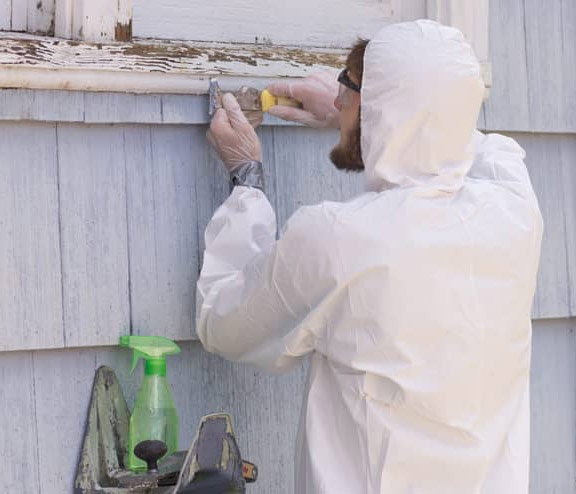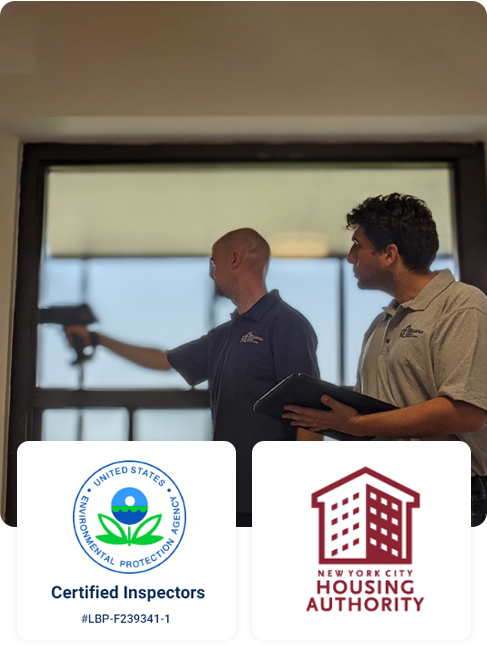Reputable DOH & HPD Lead Violation Removal in NYC-- Secure Your Property
Reputable DOH & HPD Lead Violation Removal in NYC-- Secure Your Property
Blog Article
Comprehensive Overview on Effective Lead Offense Elimination Strategies
In the realm of environmental safety, resolving lead violations demands a thorough and organized approach. This extensive overview starts by highlighting the crucial first actions of recognizing lead dangers through innovative assessment and screening methods. Methods such as XRF evaluation and dust wipe tasting are crucial in pinpointing contamination sources. Furthermore, the guide elaborates on the importance of adhering to stringent safety and security procedures during the removal process, consisting of making use of correct PPE and separating impacted areas (Lead Paint Removal Company). The subsequent sections promise to review post-removal confirmation and precautionary techniques, ensuring long-term safety and security and compliance. Discover the elaborate information that make these strategies not just effective yet necessary.
Identifying Lead Dangers
Determining lead dangers is a critical first step in reducing the dangers connected with lead exposure. Lead, a poisonous steel, can be present in various environmental mediums, including paint, soil, water, and dust.
The preliminary phase in determining lead dangers entails recognizing usual lead resources within the constructed setting. Frameworks constructed prior to 1978 are specifically at risk as a result of the prevalent use lead-based paint during that period. Additionally, soil contamination can occur from deteriorating exterior paint, commercial exhausts, or historic use leaded gas.
One more significant source is lead piping and pipes components, which can seep lead into drinking water. Durable goods such as playthings, porcelains, and imported products may additionally have unsafe lead degrees. Significantly, work environments and hobbies entailing lead can track pollutants into homes.
Assessment and Screening
When attending to lead hazards, reliable assessment and screening are paramount. Preliminary assessment normally involves a visual examination to determine possible lead sources, such as degrading paint or infected dust.

Dust wipe tasting is an additional crucial method, specifically in residential settings. By gathering examples from floorings, windowsills, and various other surfaces, this technique supplies understandings right into prospective exposure risks. Dirt screening around structure borders is essential to spot lead contamination that could position risks, particularly to youngsters.
Safe Elimination Treatments
Upon finishing detailed analysis and screening, applying secure elimination procedures is the next vital phase in dealing with lead hazards. This process ensures that lead-contaminated products are properly and securely removed, reducing risk to both workers and homeowners. The very first step includes isolating the affected location utilizing plastic sheeting and proper securing methods to avoid the spread of lead dust.
Employees need to don appropriate individual protective equipment (PPE), consisting of respirators, handwear covers, and disposable coveralls, to minimize direct exposure. Employing specialized devices and damp methods, such as damp sanding or using HEPA-filtered vacuum cleaners, decreases the diffusion of lead bits. It is essential to stay learn this here now clear of completely dry sanding or unpleasant blasting, as these approaches can produce harmful lead dirt.
Waste disposal is an additional important part; all polluted materials need to be securely gotten and labeled according to EPA and neighborhood policies. In addition, extensive cleansing of the workplace with HEPA vacuums and wet cleaning guarantees the elimination of residual lead bits.
Post-Removal Confirmation

Verification of effective lead elimination, recognized as post-removal confirmation, is imperative to guarantee the safety and habitability of the remediated area. This assessment guarantees that all recognized resources of lead have been attended to and that no noticeable indications of contamination stay.
Complying with the aesthetic assessment, environmental sampling is conducted. This involves collecting dirt, dirt, and occasionally water examples from the remediated area. Certified labs evaluate navigate to this site these samples to gauge lead degrees, guaranteeing they fall listed below the security thresholds developed by governing bodies such as the Epa (EPA)
In addition, air quality screening might be carried out to spot airborne lead fragments, specifically in situations where comprehensive lead-based paint elimination or improvement has occurred. The outcomes of these tests provide measurable information confirming that the lead degrees are within allowable limits.
Inevitably, post-removal confirmation works as a critical checkpoint, confirming the efficiency of the lead reduction efforts and safeguarding the wellness of residents and site visitors.
Safety Nets and Upkeep

A vital precautionary measure includes using lead-safe accredited service providers for any type of improvement, repair work, or paint activities. These experts click for more info are educated in methods that decrease lead dust and debris. In addition, maintaining colored surface areas to avoid breaking or peeling off is vital, as wearing away paint can release lead bits right into the setting.
Educational initiatives targeting homeowner and renters pertaining to the dangers of lead and the significance of reporting any type of possible hazards can even more improve preventative initiatives. Regular cleaning using HEPA vacuums and wet mopping methods can dramatically reduce lead dust accumulation.
Final Thought
In recap, efficient lead offense elimination demands a meticulous approach incorporating thorough assessment, accurate testing, and strict removal procedures. Guaranteeing security with appropriate isolation and personal protective devices continues to be critical. Post-removal confirmation by means of environmental tasting and air quality testing corroborates conformity with well-known safety and security criteria. Continuous evaluations and maintenance are essential to minimize future lead dangers, thus safeguarding public wellness and making certain sustained compliance with governing demands.
Report this page